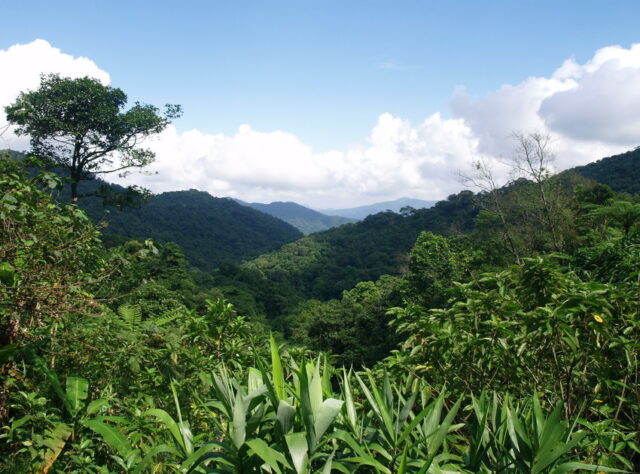
By – Prof. Dominick Spracklen and Suzanne Stas, University of Leeds
Two new papers published by researchers at the University of Leeds in partnership with WLT and Viet Nature shed new light on the complex impacts of illegal logging in Vietnam. This new information will help Viet Nature work together with local communities to improve livelihoods, reduce illegal logging and protect forests of global importance.
Forests in Vietnam have been degraded by decades of logging. After the Vietnam War, state forestry companies extensively logged forests throughout the country. In the mid 2000’s, Vietnam’s timber resources were so exhausted that the government banned logging. Despite it now being illegal, local communities continued to cut and sell timber and the forests continued to become more and more degraded. Less than 10% of natural forests in Vietnam are now considered to be good quality.
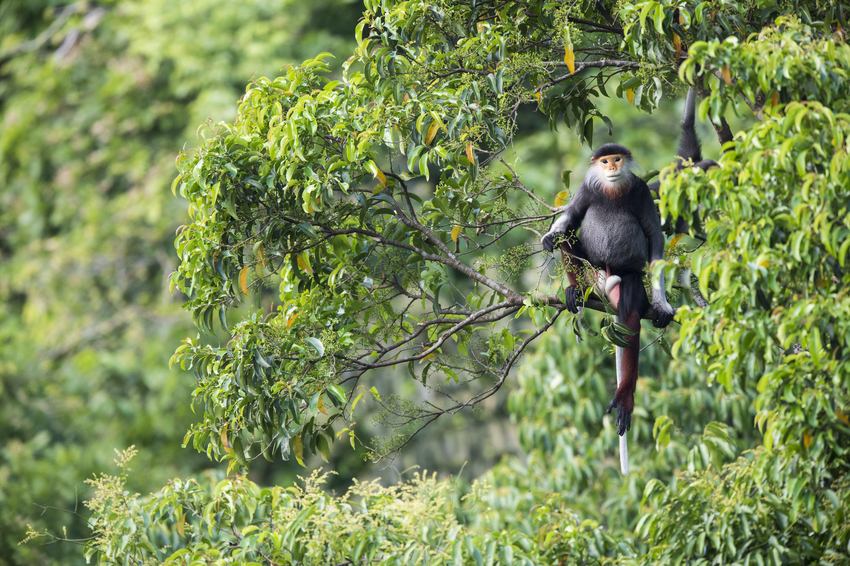
High quality old growth forests are essential for the survival of many vulnerable species, including the endangered Red-shanked Douc, photographed here at Khe Nuoc Trong. © Bjornolesen.com/Viet Nature
One of the best remaining areas of lowland forest in Vietnam is Khe Nuoc Trong, a 23,000 hectare (56,830 acre) forest in Quang Binh Province, north Central Vietnam. Forests in Khe Nuoc Trong are home to a rich range of wildlife and exceptional biodiversity. WLT is supporting the conservation here through a Carbon Balanced project, managed by local partner, Viet Nature. The project aims to reduce illegal logging, allowing the forests to recover, store more carbon and reduce climate change. The project is working closely with local people to reduce their reliance on illegal logging and develop alternative ways to make a living. Designing project activities that deliver both of these goals requires good information on the links between logging, livelihoods and forest degradation.
To help gather this information, WLT supported a PhD studentship at the University of Leeds. However, getting accurate information on both past and current logging proved challenging. There were no records detailing when and where logging occurred, or how much timber had been extracted. And of course no one keeps records of how much timber they illegally take from the forest. In the absence of this information we used a combination of interviews with local people and satellite images dating back to the 1980’s to piece together the logging history of the forest. We then established survey plots in areas that had experienced different amounts of logging. Forest surveys involved tagging, identifying and measuring all the trees within 50 m by 50 m plots. We then combined information on the height and diameter of the trees with knowledge of the tree species to estimate the amount of carbon stored in the forest.
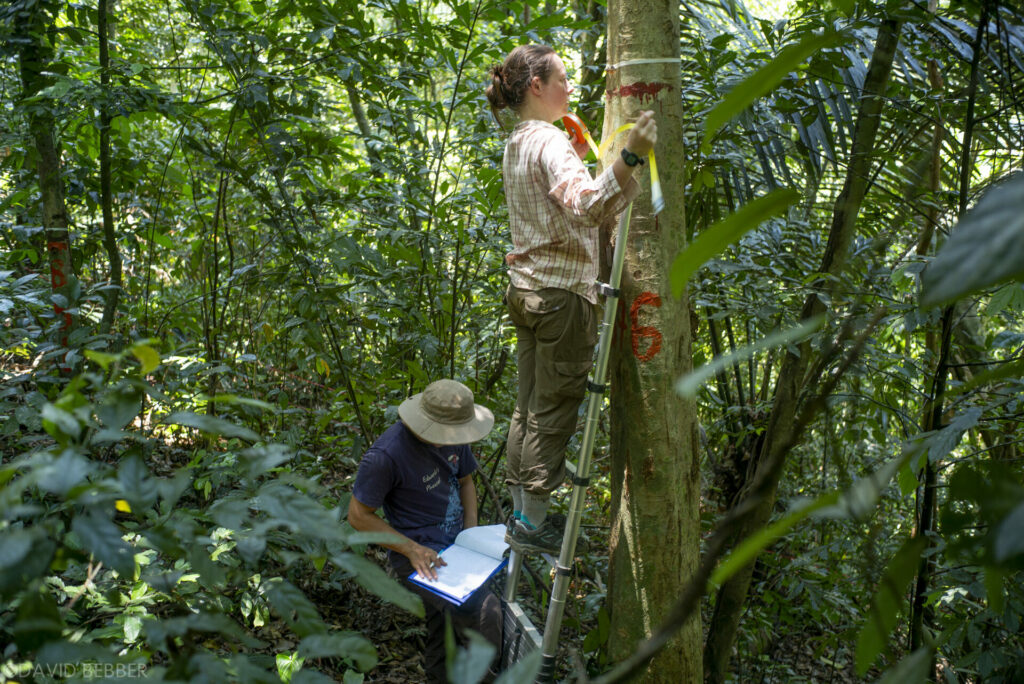
Gathering data in a forest plot, Khe Nuoc Trong. ©David Bebber
We found forests where little logging had occurred stored twice as much carbon as forests that had been heavily logged. This highlights the damage that is caused by unsustainable logging. If the amount of logging can be reduced, forests should recover, storing more carbon and helping to reduce climate change.
We then set out to measure how much illegal logging was still going on in the forest. By counting the number of tree stumps we were able to show that illegal logging was releasing as much as 130 000 tonnes of carbon dioxide each year.
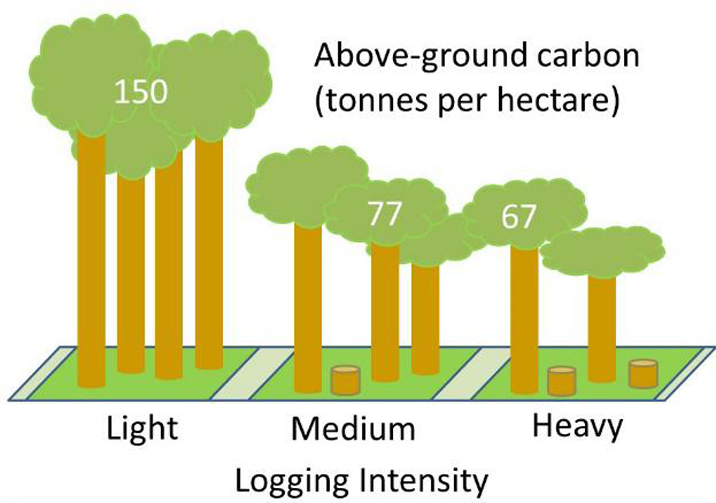
Comparison of above-ground carbon storage, in areas of differing logging intensity.
In collaboration with researchers at Hue University we asked 300 households living around the forest about their livelihoods. Illegal logging made up 14% of total household income. Sale of other products collected from the forest, such as honey and mushrooms, but also including hunting and trapping wild animals, made up an additional 14% of income. The surveys demonstrated the importance of the forest for the livelihoods of local people but also that unsustainable extraction of timber and hunting of animals was damaging the forest and its wildlife. More than 60% of local people were worried that the forests they rely on were becoming increasingly degraded.
The project team is now using this information to work with local communities to reduce illegal logging. Viet Nature supports forest patrols that support law enforcement. To reduce the need for local people to illegally cut timber, Viet Nature is working with local communities to help improve their acacia plantations. Better managed plantations can produce better quality timber that will sell for more money in local markets, increasing household incomes whilst reducing the need for illegal logging.
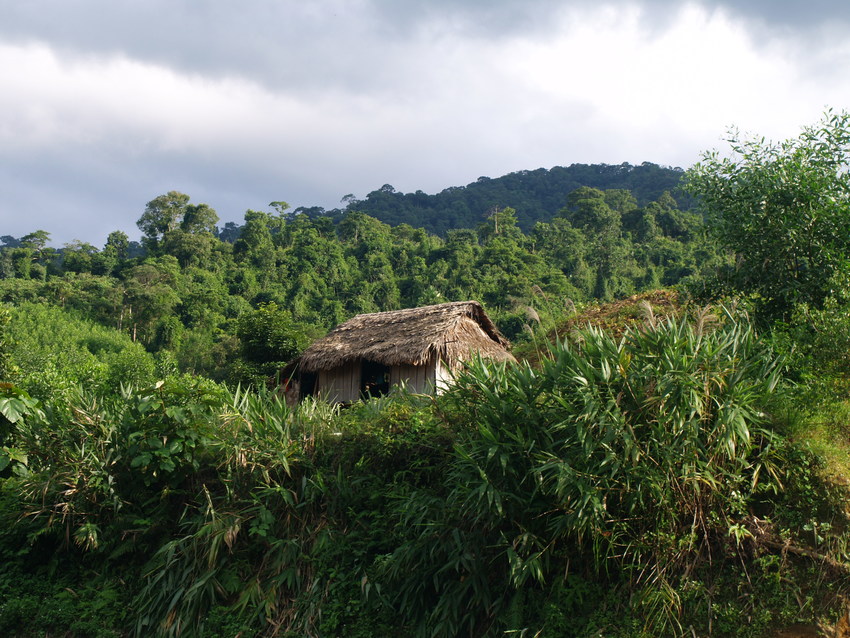
A traditional Van Kieu house on the outskirts of Khe Nuoc Trong, Carbon Balanced project in Vietnam. Credit: WLT/Natalie Singleton
The next steps of our research are to monitor how the carbon stored in the forest increases as illegal logging declines and the forest recovers. Forest plots that were surveyed in 2016 and 2018 will be surveyed again in 2021. We are also working to develop new methods to detect illegal logging using satellite images. All of this information is used by WLT to design and develop its Carbon Balanced programme to ensure that projects store carbon, protect biodiversity and support local communities.
For More Detailed Information:
Stas et al., Logging intensity drives variability in carbon stocks in lowland forests in Vietnam, Forest Ecology and Management, 460, 117863, 2020. Ngo et al., The potential for REDD+ to reduce forest degradation in Vietnam, Environmental Research Letters, 2020.
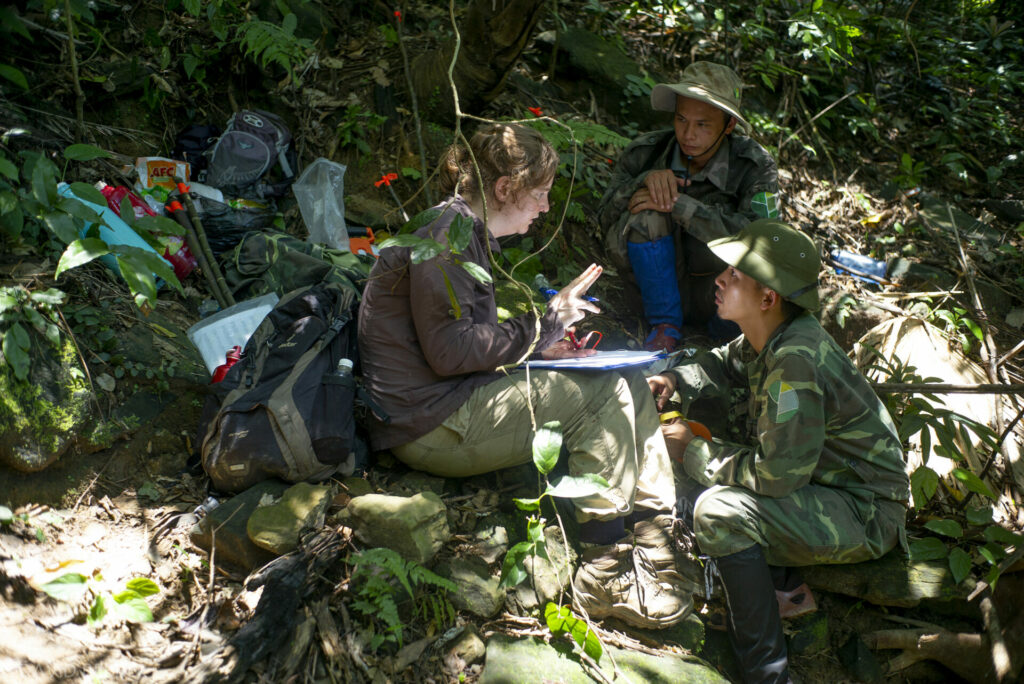
Suzanne Stas and rangers from Viet Nature preparing to mark out forest plots, Khe Nuoc Trong. ©David Bebber.
